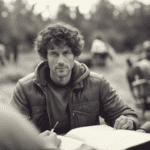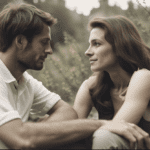“Nice Guys don’t finish last; they rot in middle management.” These words hit me like a sledgehammer right between the eyes. This is one of the many truths with which I came face-to-face in Dr. Robert Glover’s excellent book No More Mr. Nice Guy.
I wasn’t in middle management. That wasn’t even on my radar or in my trajectory. I was, however, a “Nice Guy.” Here’s how Dr. Glover defines a “Nice Guy”: (you can read more about it here)
Nice Guys are guided by the following three “covert contracts”:
If I am a good guy, then everyone will love me and like me (and people I desire will desire me).
If I meet other people’s needs without them having to ask, then they will meet my needs without me having to ask.
If I do everything right, then I will have a smooth, problem-free life.
These covert contracts operate at an unconscious level. They don’t work for a number of reasons, but Nice Guys are convinced they should.
Dr. Robert Glover – No More Mr. Nice Guy
That was me. To a “T.” And his statement that “Nice Guys don’t finish last, they rot in middle management” wasn’t a comment on middle management. It wasn’t commenting on career paths, aspirations, or motivation, or anything like that. It was true. For me, it was a cold, hard truth that pierced through every layer of my being and struck at the greatest of my fears – mediocrity.

KEY POINTS
- My story how I’ve realized that mindfulness can help us stop the cycle of self-sabotage, fear and worry.
- It’s not about fixing anything or having a state of perfection, but about finding inner quiet confidence in our lives.
Starving at Life’s Banquet
I know what you’re thinking: “That’s a very privileged, first-world-problem kind of statement, that your biggest fear is mediocrity.” And I get that. Some people fear not paying their rent, that they won’t know where their next meal is coming from, or fear they won’t live much longer.
I’ve been there, and this was my truth.
I wasn’t afraid of dying. I was fearful of not actually living. Afraid to fail. Afraid to take a chance. Afraid to succeed. To paraphrase Auntie Mame, life is a banquet, and I was one of those poor suckers that was starving to death.
I was missing out on a lot. Everything and everyone seemed to be passing me by. I was missing out on what was going on around me. I felt misunderstood and found it challenging to connect with other people. I wasn’t truly living. I felt like I wasn’t able to express my true nature. That guy didn’t fit in. Others wouldn’t accept that guy. I was ashamed of that guy.
After years of living, or rather existing, this way, I decided I’d had enough. I was sick and tired of being sad, lonely, depressed, scared. I was sick and tired of being mediocre.

In The Long Run
That’s when I was introduced to meditation. I started doing guided meditations and experimenting with different forms of meditation.
At the time, I was racing triathlons and training for my first Ironman. The stress of work, starting a new job, the uncertainty and fear of the unknown about completing something like an Ironman. The mental fortitude it takes to train and race. The extremely high training volume (I trained 45+ hours a week, seven days a week). My daytime job and whatever social and familial commitments I could squeeze in. All of these were taxing on me mentally and spiritually.
I knew about meditation and felt like it could be beneficial. Still, I was so busy and active, I “didn’t have time” to fit in a regular practice.
Then I read Rich Roll’s book ‘Finding Ultra.’ One of the things he described was using his long runs and rides as active meditations. I started doing just that, and it was truly transformative. My long runs (12-18 miles) and long rides (40-60 miles) became wonderful moving meditations out in the open air.
It affected me that I also began incorporating guided meditation, making it a daily part of my training.
Awakening to Awareness
This new practice was especially difficult for me. My mind was continuously racing, and I was thinking about many different things at the same time.
I would get caught up thinking about the past. I’d spend a lot of time thinking about the future. It seemed just reminding myself to be in the present moment was another thing that I was thinking about and seemed to defeat the whole purpose altogether.
I also learned as an adult; I have ADD. Understanding it as an adult, I’d never really had time to deal with it. And I’ve had all these years of ways that I’ve compensated for it, of course, without knowing it.
I kept with my meditations, experimenting with different guided meditations, different forms, times, positions, etc. And over time, I started to notice a difference.
Get the free guide Quiet Confidence: A Men’s Guide to Living a Free, Authentic, Joyful, Centered, & Purposeful Life”
This workbook will provide you with an introduction to mindfulness as a foundation for living a more deliberate, authentic, purposeful life of peace, freedom, health, and fulfillment.
You’ll also signup for the newsletter to get valuable content right in your inbox.
Your privacy is respected. Data will never be sold or shared. Unsubscribe at any time.
Phase 1: Presence
I began to pay attention to what was happening in the present moment.
I started to feel “in my body.” I began to feel relaxed. I began to feel an awareness. I was aware; I was present. I felt myself there being in that particular moment.
I began to notice the tension in my body and mind, even outside meditation, and would start to relax. I would do body scan meditations and learned what it felt like to be aware of what was happening at different parts of my body.
I would simply sit with my thoughts and observe them by just seeing them, noticing them, and then letting them go.
I started letting go of distractions – thoughts, emotions, fears, etc. I was training myself to stay in the present moment.
And entering into that state during meditation gave me a baseline to compare the rest of my day.
It gave me a way to create this sense-memory of how I would show up and be present in any given moment throughout my day beyond just when I was meditating. So I knew what it felt like to give something my full attention and focus.
I knew what it felt like to have my mind quiet down a little. And to focus on something. In this case, my breath is going in and out.
From here, I began to grow into the next phase.

Phase 2: Stillness
As I grew in my meditation practice, I began to find a balance between awareness and relaxation. I could be actively aware and in a relaxed state. The more comfortable I became, the more aware I could be. The more conscious, the more comfortable I was.
I allowed myself to be still in my body. I was OK with silence. I became comfortable with observing, inside and out.
My thoughts still came, fast and furious. However, it was like they were cars on a busy highway. And now, instead of them seeming like one big, blurry stream, I saw them as individual cars. The spaces between them began to get larger. Time seemed to slow down.
I was able to rest and just be in open awareness. And with that, I was able to translate that into my daily life.
I was aware of things going on around me and where I was, and what was happening. I noticed the details. I made a conscious effort to pay attention at that moment, not wanting to be anywhere else to give whatever. It was my complete focus.
That then moved me into the next phase.
Phase 3: Awareness
The more I practiced, the more I grew. I began to be curious about what I was observing. Through my lens of awareness, I began to seek my “why.”
“Why do I have that emotional response to that thought?”
“Why do these situations trigger me?”
“Are my thoughts providing me with accurate information about what’s going on?”
I began to explore my world, both within me and outside of me. What exactly is happening around me? What makes me tick? Why do I feel the way I do? Who am I?
I worked to forget what I thought I knew about the answers to those questions. I just honestly and non-judgmentally asked those questions. I let go of any expectations of what the answers might be. Or even that I would get an answer at all.
And as I did have answers or observations, I learned to just accept it for what it was. It was neither good nor bad, positive nor negative. It just was.
Mindfulness, which was the extension of my meditation practice, gave me a way of looking at things differently. It enabled me to relate to all of the experiences in my daily life, those that enriched me, those that made me uncomfortable.
I began to know myself better. And knowledge was power. If there was something about myself I wanted to change, I wasn’t ashamed of it and didn’t feel bad about it.
What I did feel was empowered to make the changes I needed.
Ever since, I’ve been especially interested in forms of meditation and mindfulness beyond the cushion, finding ways to apply that and maintain my presence and awareness in all aspects of my life.
And my journey continues.
Want more? Get the free guide “Quiet Confidence: A Men’s Guide to Living a Free, Authentic, Joyful, Centered, & Purposeful Life“
This workbook will introduce mindfulness as a foundation for living a more deliberate, authentic, purposeful life of peace, freedom, health, and fulfillment.






